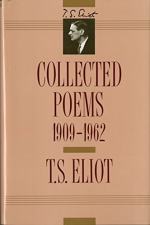|
This section contains 334 words (approx. 1 page at 400 words per page) |

|
The Hollow Men Summary & Study Guide Description
The Hollow Men Summary & Study Guide includes comprehensive information and analysis to help you understand the book. This study guide contains the following sections:
This detailed literature summary also contains Quotes and a Free Quiz on The Hollow Men by T. S. Eliot.
The following version of this poem appears in: Eliot, T.S. Complete Poems and Plays. Faber & Faber, 2004.
Note that all parenthetical citations refer to the line number from which the quotation is taken.
“The Hollow Men” is a poem in five sections written by modernist poet T.S. Eliot, originally published in 1925 in Eliot’s Poems: 1909-1925. That four of the five sections had previously appeared in print suggests Eliot combined fragments of previous works as part of the composition of “The Hollow Men.” Additionally, the work contains allusions to a range of European literary works and cultural mythos, including fourteenth-century poet Dante Alighieri’s Divine Comedy, William Shakespeare’s historical play Julius Caesar, the turn of the century novels of Joseph Conrad, and the English celebration Guy Fawkes Day. The result is a polyphonic work of overlapping themes that resists singular interpretation and has produced a range of meanings.
An unnamed speaker narrates the poem, moving between the first person plural and singular – “We” and “I” – throughout the poem. He describes himself as part of a group of half-alive effigies residing in a waste land of ambiguous nature: it is a space much like Limbo or Purgatory, an element of the Catholic afterlife reserved for those who were neither bad nor good on earth. The setting is, however, unstable: it is at times a desert, other times an empty cellar, and also the beach of a river. But constant throughout the poem is the presence of certain “eyes,” staring for divine judgement – which the speaker avoids by adopting the guise of a scarecrow. At the same time, the eyes are the only thing that would bring an end to his suffering, if they were to reappear as an unfading star and many-petaled rose, both symbols of Heaven. The poem ends pessimistically, even nihilistically, containing a circular dance around a cactus and Eliot’s most quoted lines which postulate the world ending "Not with a bang but with a whimper" (98).
Read more from the Study Guide
|
This section contains 334 words (approx. 1 page at 400 words per page) |

|



